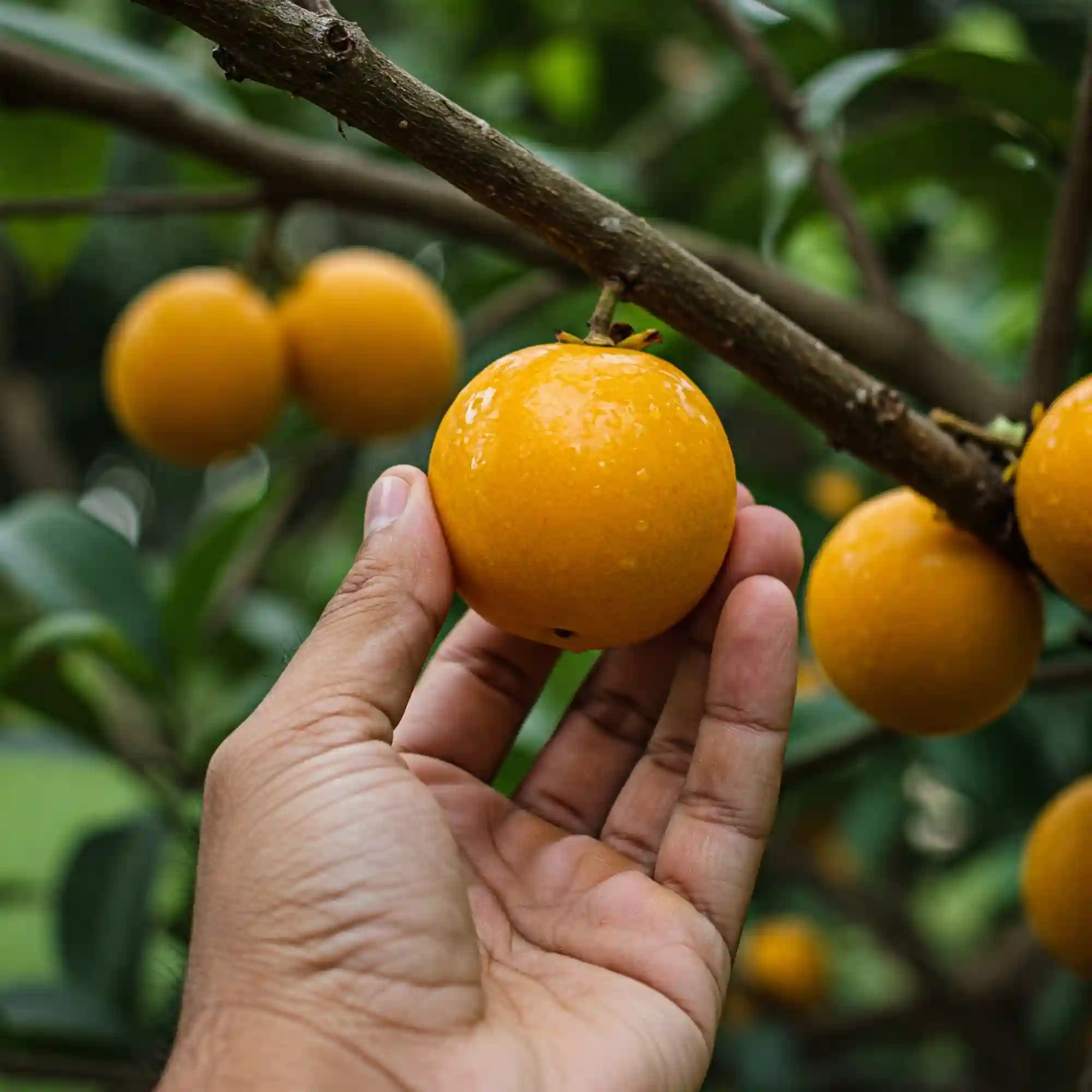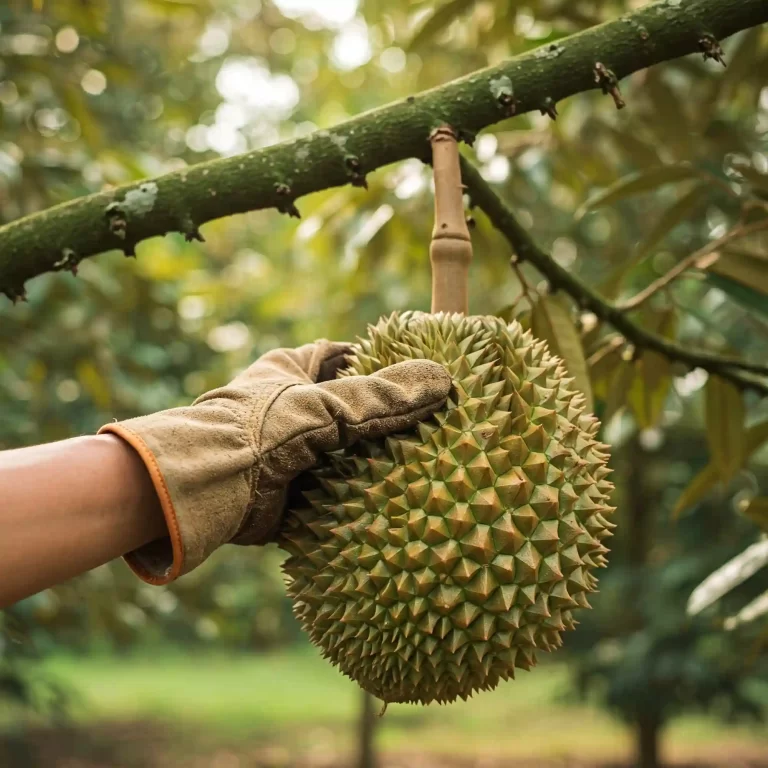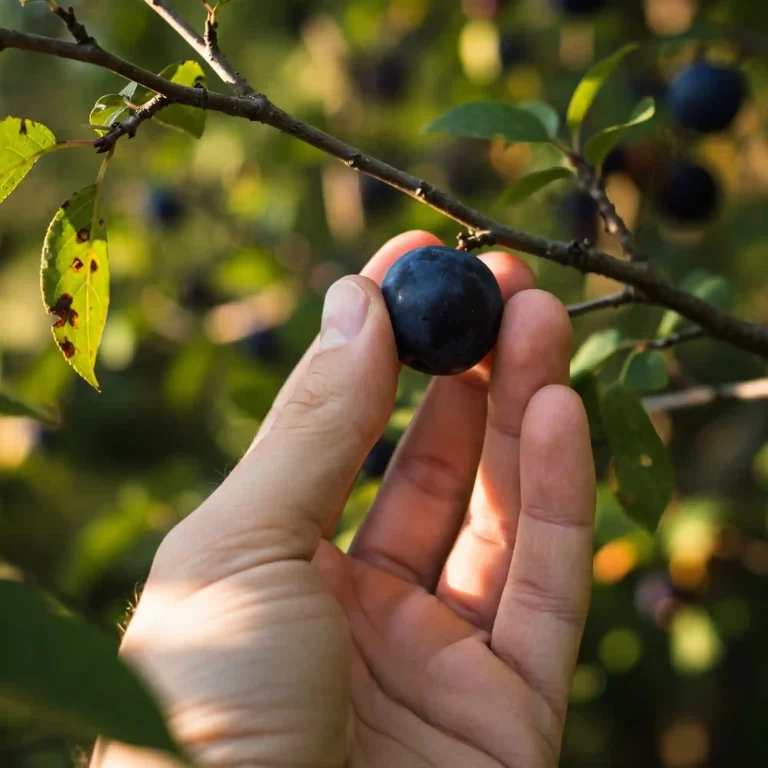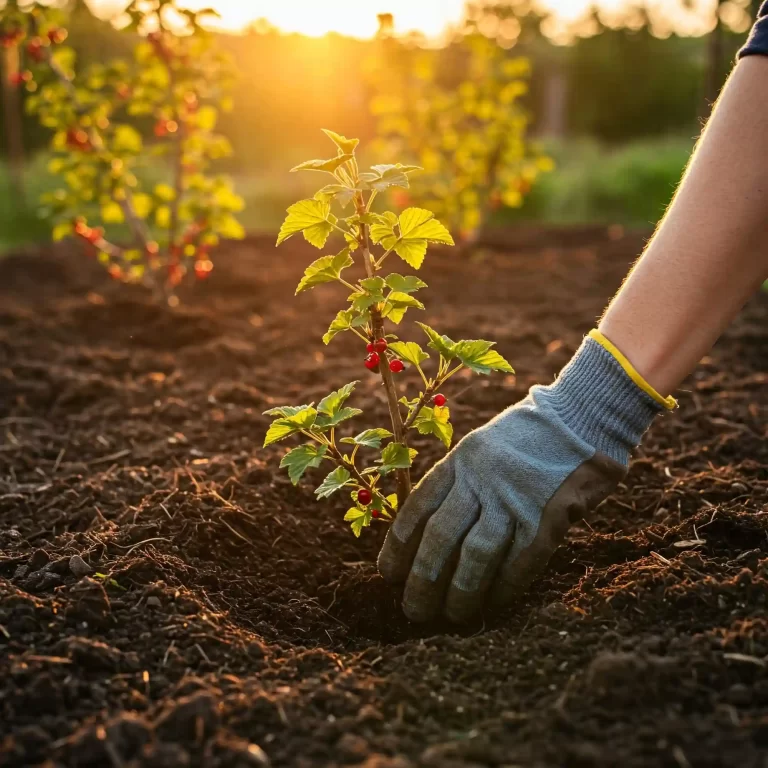Are you dreaming of harvesting your own sweet and tangy Catmon fruits, but feel overwhelmed by the process? You’ve likely searched for guides, only to find vague instructions or complex jargon that leaves you more confused. I understand that frustration. Let me tell you, growing Catmon fruits at home is achievable, even if you’re a beginner. I’ve spent years cultivating these unique fruits, and I’m here to share my practical, step-by-step guide to help you succeed.
Understanding the Catmon Fruit: A Tropical Treasure
The Catmon fruit, scientifically known as Dillenia philippinensis, is a tropical gem native to the Philippines. You might be curious about its unique characteristics. The fruit itself is a medium-sized, round or oval berry, with a greenish-yellow to yellow skin when ripe. The flesh is juicy, tangy, and slightly sweet, often compared to a mix of citrus and apple. It’s rich in vitamins and minerals, making it a healthy addition to your diet.
- Nutritional Value: Catmon fruits are a good source of vitamin C, fiber, and antioxidants.
- Taste Profile: The flavor is a balance of tartness and sweetness, which is refreshing.
- Culinary Uses: You can eat it raw, make it into jams, juices, or add it to desserts.
Let’s delve deeper into its botanical aspects. The Catmon tree is a medium-sized evergreen, typically growing up to 15 meters tall. It thrives in tropical climates, needing ample sunlight and well-draining soil. You’ll find it growing wild in forests and cultivated in backyards across Southeast Asia.
- Growth Habit: The tree has a spreading canopy and produces large, showy flowers before fruiting.
- Regional Significance: In the Philippines, Catmon fruits hold cultural importance, often used in traditional recipes.
- Adaptability: While it prefers tropical conditions, you can grow it in subtropical areas with proper care.
To give you a better idea of its nutritional content, here’s a table comparing it to other tropical fruits:
| Fruit | Vitamin C (mg/100g) | Fiber (g/100g) |
| Catmon | 50-70 | 2.5 |
| Mango | 36 | 1.6 |
| Pineapple | 48 | 1.4 |
| Orange | 53 | 2.4 |
As you can see, Catmon is a nutritional powerhouse.
Now, why should you consider growing Catmon? Beyond its delicious taste and health benefits, it adds a unique touch to your garden. The tree itself is ornamental, with its large leaves and beautiful flowers. Plus, growing your own fruits means you have access to fresh, organic produce right at your doorstep.
“The Catmon fruit is a hidden treasure of the tropics,” says Dr. Maria Santos, a botanist specializing in Philippine native plants. “Its unique flavor and nutritional value make it a valuable addition to any home garden.”
I’ve found that growing Catmon is a rewarding experience. The tree’s lush foliage provides shade, and the fruits are a delightful treat. You’ll enjoy watching the tree grow and produce its bounty.
Key Considerations:
- Understanding the Catmon fruit’s characteristics is crucial for successful cultivation.
- Its nutritional value and unique taste make it a worthwhile addition to your garden.
- The tree’s adaptability to tropical and subtropical climates allows for wider cultivation.
Preparing for Catmon Cultivation: Soil, Climate, and Location
Now that you’re acquainted with the Catmon fruit, let’s get down to the nitty-gritty of growing it. The first step is to ensure you have the right environment and conditions.
Soil: Catmon trees thrive in well-drained, fertile soil. A sandy loam soil mix is ideal. It’s essential to avoid waterlogged conditions, as this can lead to root rot. You can improve soil drainage by adding organic matter like compost or well-rotted manure before planting.
pH: Catmon trees prefer slightly acidic to neutral soil with a pH range of 6.0 to 7.0. You can test your soil’s pH using a simple soil test kit available at most gardening stores.
Climate: As a tropical fruit, Catmon requires a warm and humid climate. It thrives in regions with consistent temperatures between 25°C and 35°C (77°F and 95°F). It can tolerate some variations in temperature but is susceptible to frost.
Sunlight: Catmon trees are sun-loving plants and require at least 6-8 hours of direct sunlight per day. Choose a location in your garden that receives ample sunlight throughout the day.
Location: Consider the size of the mature tree when choosing a planting location. Catmon trees can grow quite large, so ensure you have enough space. Avoid planting them too close to buildings or other trees that might compete for sunlight and water.
Additional Considerations:
- Wind: Strong winds can damage the tree and its fruits. If you live in a windy area, choose a sheltered location or provide windbreaks.
- Rainfall: Catmon trees require regular rainfall or consistent irrigation. However, ensure the soil doesn’t become waterlogged.
By carefully considering these factors, you can create the ideal environment for your Catmon tree to flourish. Remember, proper preparation is key to successful cultivation.
How to Propagate Catmon: Seeds and Seedlingsi
Now that you’ve prepared the ideal growing environment, it’s time to acquire your Catmon tree. You have two primary methods for propagation: from seeds or by purchasing seedlings.
1. Growing from Seeds:
- Sourcing Seeds: Obtain fresh Catmon seeds from ripe fruits. Ensure the seeds are plump and free from any damage.
- Preparation: Clean the seeds thoroughly to remove any remaining pulp. This helps prevent fungal growth.
- Scarification: Catmon seeds have a hard outer coating. Scarification is a technique that weakens the seed coat to aid in germination. You can do this by gently nicking the seed coat with a sharp knife or using sandpaper. Be careful not to damage the embryo inside.
- Soaking: Soaking the seeds in warm water for 24-48 hours can further encourage germination. Change the water regularly to prevent bacterial growth.
- Sowing: Sow the seeds in well-draining seed trays or pots filled with a sterile seed-starting mix. Plant the seeds about 1/2 inch deep, spacing them adequately to allow for growth.
- Germination: Place the trays or pots in a warm, humid location with indirect sunlight. Germination can take several weeks.
- Care of Seedlings: Once the seedlings emerge, provide them with consistent moisture and adequate light. Transplant the seedlings into individual pots when they are large enough to handle.
2. Purchasing Seedlings:
- Source Reputable Nurseries: Purchase seedlings from reputable nurseries specializing in tropical plants.
- Inspection: Inspect the seedlings for any signs of disease or pests before buying. Choose healthy seedlings with vibrant green foliage.
- Acclimatization: If the seedlings were grown in a greenhouse, gradually acclimatize them to outdoor conditions before planting them in the ground.
Key Considerations:
- Growing Catmon from seeds can be time-consuming, but it’s a rewarding experience.
- Purchased seedlings offer a faster way to start your Catmon tree.
- Ensure proper care of seedlings to ensure healthy growth and development.
Planting Your Catmon Tree: A Guide to Success
Now that you have your Catmon seeds or seedlings, it’s time to plant them! Here’s a step-by-step guide to ensure a successful planting:
Timing: The best time to plant Catmon is during the start of the rainy season or during the wettest part of the year. This provides adequate moisture for the young tree to establish itself.
Planting Depth: Dig a hole that is slightly larger than the root ball of the seedling or deep enough to accommodate the seeds. Plant the seedling or seeds at the same depth they were previously growing.
Soil Backfill: Backfill the hole with the original soil you removed, ensuring that the base of the tree is level with the surrounding ground. Gently firm the soil around the base of the tree.
Watering: Water the newly planted tree thoroughly to settle the soil and provide adequate moisture.
Mulching: Apply a layer of organic mulch, such as wood chips or coconut husks, around the base of the tree to help retain moisture, suppress weeds, and regulate soil temperature.
Staking (Optional): For young trees, especially those planted in windy areas, providing support with a stake can be beneficial. Tie the tree loosely to the stake using soft materials like cloth or old stockings to prevent damage to the bark.
Post-Planting Care:
- Continue to water the tree regularly, especially during dry periods.
- Monitor the tree for any signs of pests or diseases.
- Weed around the base of the tree regularly to prevent competition for water and nutrients.
With proper care and attention, your young Catmon tree will establish itself and begin its journey towards bearing fruit.
Key Considerations:
- Choose the right planting time and location to ensure optimal growth.
- Proper planting depth and soil preparation are essential for healthy root development.
- Regular watering and mulching are crucial, especially during the initial establishment phase.
Nurturing Your Catmon Tree: Watering, Fertilizing, and Pruning
Now that your Catmon tree is planted, it’s time to provide the ongoing care it needs to thrive. This includes proper watering, fertilizing, and pruning.
Watering:
- Frequency: Water your Catmon tree regularly, especially during dry periods. The frequency of watering will depend on factors such as rainfall, soil type, and temperature.
- Depth: Water deeply to encourage deep root growth. Aim to water the soil to a depth of 6-8 inches.
- Mulching: Mulching around the base of the tree helps retain moisture and reduces the frequency of watering.
Fertilizing:
- Timing: Fertilize your Catmon tree during the growing season, typically spring and summer.
- Type of Fertilizer: Use a balanced fertilizer formulated for fruit trees. Organic fertilizers, such as compost or well-rotted manure, can also be beneficial.
- Application: Apply the fertilizer around the drip line of the tree (the outer edge of the canopy). Avoid applying fertilizer directly to the trunk, as it can damage the bark.
Pruning:
- Purpose: Pruning helps to shape the tree, remove dead or diseased branches, and encourage healthy growth.
- Timing: Prune your Catmon tree during the dormant season, typically in late winter or early spring.
- Techniques:
- Remove dead or diseased branches: Cut back any dead, damaged, or diseased branches to the main trunk.
- Thin out the canopy: Remove any crossing or rubbing branches to improve air circulation and light penetration.
- Shape the tree: If necessary, prune to shape the tree and control its size.
Key Considerations:
- Consistent watering is essential for healthy growth and fruit production.
- Fertilize your Catmon tree regularly to provide the necessary nutrients.
- Proper pruning techniques can improve tree health and productivity.
Protecting Your Catmon Tree: Pest and Disease Management
While Catmon trees are generally hardy, they can be susceptible to certain pests and diseases. Regular monitoring and timely intervention are crucial to maintaining the health of your tree.
Common Pests:
- Aphids: These small, sap-sucking insects can infest young leaves and shoots, causing stunted growth and leaf distortion.
- Mealybugs: These soft-bodied insects secrete a white, cottony substance that can cover the leaves and stems of the tree.
- Scale insects: These tiny, immobile insects attach themselves to the bark and suck the sap from the tree.
Common Diseases:
- Fungal diseases: Catmon trees can be susceptible to fungal diseases like powdery mildew and leaf spot. These diseases can cause leaf discoloration, defoliation, and reduced fruit production.
- Bacterial diseases: Bacterial blight is a serious disease that can affect the leaves, stems, and fruits of the tree.
Pest and Disease Management Strategies:
- Regular Inspection: Regularly inspect your Catmon tree for any signs of pests or diseases. Early detection is key to effective treatment.
- Handpicking: For small infestations of pests like aphids and mealybugs, handpicking can be an effective control method.
- Insecticidal Soap: Insecticidal soap can be used to control aphids and other soft-bodied insects.
- Neem Oil: Neem oil is a natural insecticide that can be effective against a variety of pests.
- Fungal Treatments: For fungal diseases, fungicides can be applied to control the infection. However, always choose organic or environmentally friendly options whenever possible.
- Pruning: Remove any severely infested or diseased branches to prevent the spread of pests and diseases.
Key Considerations:
- Preventative measures, such as maintaining good hygiene practices and providing proper care, are crucial in preventing pest and disease problems.
- Choose organic or environmentally friendly pest and disease control methods whenever possible.
- Consult with a local arborist or plant pathologist for advice on managing specific pest or disease problems.
Harvesting and Enjoying Your Catmon Fruits
The culmination of your efforts is finally here: harvesting the fruits of your labor (literally!). Catmon fruits typically ripen during the summer months. Here’s how to know when they’re ready to pick:
- Color: Ripe Catmon fruits will turn from green to a bright yellow or yellow-orange color.
- Texture: The skin will feel slightly soft to the touch.
- Taste: You can gently squeeze the fruit; if it yields slightly, it’s likely ripe.
Harvesting Techniques:
- Use a Ladder: If the fruits are high up on the tree, use a sturdy ladder to reach them safely.
- Gently Pick: Twist and pull the fruits gently to avoid damaging the tree or the fruit.
- Handle with Care: Avoid dropping or bruising the fruits, as this can affect their quality.
Enjoying Your Catmon Fruits:
Catmon fruits are versatile and can be enjoyed in a variety of ways. Here are some ideas:
- Eat them fresh: Wash the fruits thoroughly and enjoy them fresh. The skin can be peeled or eaten along with the flesh.
- Make Catmon juice: Blend the fruits with water and strain to create a refreshing juice.
- Create Catmon jams and preserves: Catmon fruits make excellent jams and preserves.
- Add to salads and desserts: Catmon fruits can add a unique flavor to salads and fruit desserts.
Key Considerations:
- Harvest the fruits at the peak of ripeness to ensure optimal flavor and quality.
- Handle the fruits carefully to avoid damage.
- Experiment with different ways to enjoy your Catmon fruits.
Common Challenges and Solutions
While growing Catmon trees is generally rewarding, you might encounter some challenges along the way. Here are some common issues and their solutions:
1. Slow Growth:
- Possible Causes: Insufficient sunlight, nutrient deficiencies, or poor soil drainage.
- Solutions: Ensure the tree receives adequate sunlight. Fertilize regularly with a balanced fertilizer. Improve soil drainage if needed.
2. Fruit Drop:
- Possible Causes: Inadequate pollination, nutrient deficiencies, or stress from pests and diseases.
- Solutions: Plant multiple Catmon trees to encourage cross-pollination. Ensure the tree receives adequate nutrition and water. Address any pest or disease problems promptly.
3. Pest and Disease Problems:
- Solutions: Regularly inspect the tree for signs of pests and diseases. Implement appropriate pest and disease management strategies as discussed earlier.
4. Environmental Stress:
- Possible Causes: Drought, strong winds, or extreme temperatures.
- Solutions: Water the tree deeply during dry periods. Provide windbreaks if necessary. Protect the tree from extreme temperatures.
5. Nutrient Deficiencies:
- Possible Causes: Lack of essential nutrients in the soil.
- Solutions: Conduct a soil test to determine nutrient deficiencies. Fertilize the tree with the appropriate nutrients.
Key Considerations:
- Addressing challenges promptly is crucial for maintaining the health and productivity of your Catmon tree.
- Observe your tree regularly and take note of any unusual symptoms.
- Consult with experienced gardeners or horticultural experts for advice on specific challenges.
Frequently Asked Questions (FAQs)
Here are some frequently asked questions about growing Catmon fruits:
1. What is the best soil for growing Catmon fruits at home?
- A well-drained, fertile soil mix is ideal for Catmon trees. A sandy loam soil is often recommended. You can amend the soil with compost or well-rotted manure to improve drainage and fertility.
2. How to grow Catmon fruits from seed in tropical climates?
- You can refer to the section on “Propagating Catmon: Seeds and Seedlings” for detailed instructions on growing Catmon fruits from seeds. Remember to scarify the seeds, sow them in well-draining soil, and provide consistent moisture and warmth.
3. Detailed guide on how to grow Catmon fruits organically?
- To grow Catmon fruits organically, avoid using synthetic fertilizers and pesticides. Use organic fertilizers like compost, manure, and bone meal. Control pests and diseases with natural methods like neem oil, insecticidal soap, and handpicking.
4. Step by step instructions for how to grow Catmon fruits Philippines?
- The steps for growing Catmon fruits in the Philippines are similar to those outlined in this guide. However, it’s crucial to choose a location with adequate sunlight and rainfall. Consider the specific climatic conditions in your region.
5. How to grow Catmon fruits and protect them from common pests?
- Refer to the section on “Protecting Your Catmon Tree: Pest and Disease Management” for information on common pests and how to control them. Regular inspection, handpicking, and the use of organic pest control methods are recommended.
6. What are the optimal conditions to grow Catmon fruits in backyard gardens?
- Optimal conditions include well-drained soil, ample sunlight (at least 6-8 hours per day), warm temperatures, and moderate humidity. Protect the tree from strong winds.
7. When and how to harvest ripe Catmon fruits for best taste?
- Catmon fruits are typically harvested during the summer months. Look for fruits that have turned yellow-orange and feel slightly soft to the touch. Harvest gently by twisting and pulling the fruits from the tree.
8. How to grow healthy Catmon fruits with natural fertilizers and pruning?
- Use organic fertilizers like compost, manure, and bone meal to provide essential nutrients. Prune the tree regularly to remove dead or diseased branches and improve air circulation.
9. Where and how to grow Catmon fruits in southeast asian countries?
- Catmon trees can be grown in various Southeast Asian countries with tropical and subtropical climates. Choose a location with ample sunlight and well-drained soil.
10. What is the process to grow catmon fruits from seedlings to harvest?
- The process involves selecting healthy seedlings, planting them in well-prepared soil, providing adequate water and fertilizer, protecting them from pests and diseases, and finally harvesting the ripe fruits.
Conclusion: Enjoying the Fruits of Your Labor
Congratulations! You’ve embarked on the rewarding journey of growing Catmon fruits. By following the steps outlined in this guide, you’ve laid the foundation for a successful and fruitful experience. Remember, patience and consistent care are key. Enjoy the process of nurturing your tree, observing its growth, and anticipating the harvest.
Growing Catmon fruits is not just about producing food; it’s about connecting with nature, appreciating the wonders of plant life, and creating a sustainable and rewarding food source. It’s about taking pride in cultivating something with your own hands and sharing the fruits of your labor with loved ones.
As you tend to your Catmon tree, you’ll gain a deeper understanding of plant life, its needs, and its resilience. You’ll learn to observe, adapt, and troubleshoot, all while nurturing a living organism. This experience can be incredibly enriching and fulfilling, fostering a sense of connection to the natural world.
Remember, every journey starts with a single step. So, plant your Catmon tree today, and embark on this exciting adventure in home gardening. Happy growing!




